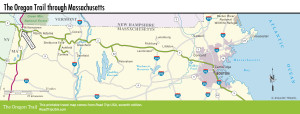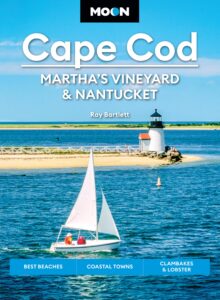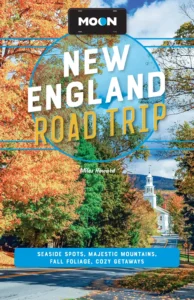New Bedford and Sandwich
New Bedford
Predominantly Portuguese New Bedford (pop. 95,315) is remembered as a capital of the whaling industry back in the days when spermaceti candles and whale oil lamps were necessities, not antiques. The city’s harbor at the mile-wide mouth of the Acushnet River was home port for the East Coast’s largest commercial fishing fleet until nearly two decades of flagrant overfishing brought the industry to collapse. The New Bedford Whaling National Historical Park showcases the cobblestone streets and brick facades, virtually unaltered since Herman Melville shipped out of here in 1840 aboard a whaler bound for the Pacific.
For a good orientation, drop by the well-stocked visitors center (508/996-4095), at the corner of William Street and North 2nd Street, and join one of the free hour-long guided walking tours. Before or after a stroll around town, head to the top of Johnny Cake Hill and visit the excellent New Bedford Whaling Museum (508/997-0046, daily, $19). Scrimshaw (carved whale ivory), tools of the whaling trade, historic photos, special maritime exhibits, and an 89-foot ship model are a few of the artifacts found in the not-to-be-missed museum collection maintained by the Old Dartmouth Historical Society. Across the street from the museum, the gorgeous little Seamen’s Bethel, dedicated in 1832 and featuring a pulpit shaped like a ship’s bow, was featured in a chapter of Herman Melville’s classic, Moby Dick.
Diner fans will appreciate New Bedford’s offerings too. The easiest diner to find is Angelo’s Orchid Diner (805 Rockdale Ave., 508/993-3172), on old US-6, a 1953 O’Mahony serving solid short-order cookery enlivened by—you guessed it—a Portuguese influence.
Sandwich
Although it rides the ridge of Cape Cod’s glacial moraine, the forest-clad US-6 freeway (called Mid-Cape Highway) affords few good vistas. Traffic willing, you’ll sail between the Sagamore Bridge and the Outer Cape in about 30 minutes, surrounded by more green than blue. One preferred route is parallel Route 6A. Never more than a mile or two from US-6, this slower road is a good introduction to a part of the Cape that does its utmost to stay quaint without being too cute. Generally, it succeeds.
Take Sandwich, for example. When you reach the center of town, you’ll come across a small irregular green bordered by a tall white church, a stately carriage-stop inn, and the Historical Society’s Sandwich Glass Museum (129 Main St., 508/888-0251, daily Apr.-Dec., Wed.-Sun. Feb.-Mar., $12). Although the town’s various glassworks could and did produce consummate extravagant vases and other artistic pieces, they mostly created inexpensive mass-market stuff—such as 10-cent oil-lamp chimneys and pressed plates and saucers, hundreds of which are on display.
Nearby on Pine and Grove Streets (follow signs from Route 130) is a more diverse collection of Americana, the Heritage Museums and Gardens (508/888-3300, daily Apr.-Oct., $20). Here, 100 acres of landscaped gardens surround collections of Currier & Ives prints, military miniatures, antique cars, cigar store figures, American primitive portraiture—more unflattering likenesses of children have never been conceived—and even a working 1912 carousel.
Map of the Oregon Trail Route in Massachusetts

















